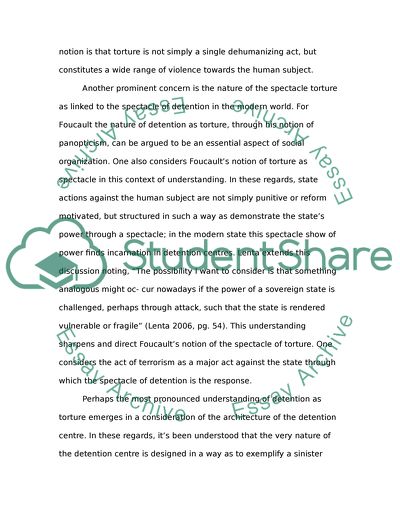The spectacle of detention centres is the same as the spectacle of Essay. Retrieved from https://studentshare.org/sociology/1436434-the-spectacle-of-detention-centres-is-the-same-as
The Spectacle of Detention Centres Is the Same As the Spectacle of Essay. https://studentshare.org/sociology/1436434-the-spectacle-of-detention-centres-is-the-same-as.


